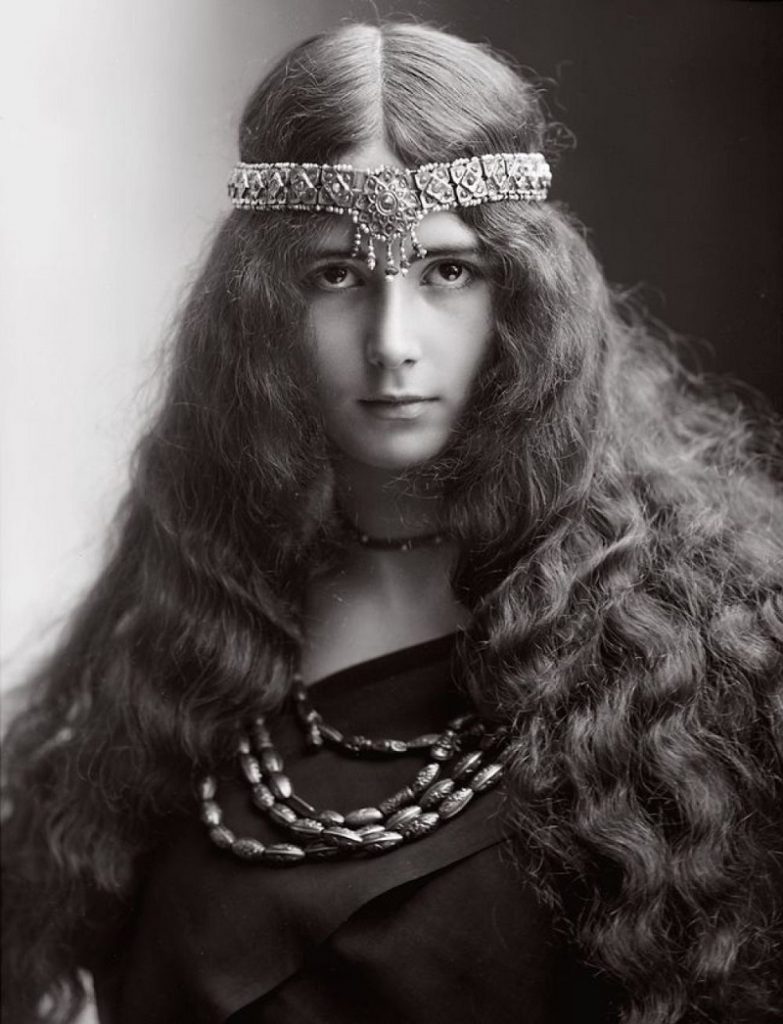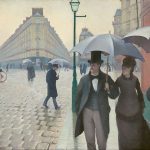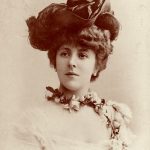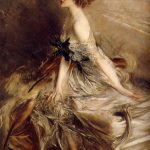
Imagine the opulent Paris Opera House, buzzing with anticipation. As the velvet curtain rises, a soft gasp spreads through the audience. Under a golden spotlight stands Cléo de Mérode, her signature center-parted chignon gleaming, her eyes fixed ahead with a blend of elegance and mystery. This isn’t just a ballet performance—it’s a Parisian phenomenon.
Cléo was more than just a dancer; she was a muse, a style icon, and a subject of scandal during the Belle Époque. Renowned artists like Edgar Degas and Giovanni Boldini found inspiration in her, while gossip columns reveled in her rumored affairs. What made Cléo so captivating? This article unravels her journey from ballet to becoming one of Paris’s most enigmatic muses.
The Early Life of Cléo de Mérode
Childhood and Dance Beginnings
Born in Paris on September 27, 1875, Cléopatra Diane de Mérode was the daughter of an Austrian aristocrat. Her upbringing was a mix of aristocratic privilege and bohemian Parisian culture. Cléo’s interest in ballet began early, and by age eight, she had joined the prestigious Paris Opera Ballet School. Her teachers were struck by her natural grace and poise.
Cléo made her professional debut at the Paris Opera Ballet, where her refined movements and delicate presence caught the audience’s eye. Early critics praised her performances, describing her as a “new type of ballerina” who emphasized elegance over technical showiness.
Physical Appearance and Public Fascination
Cléo’s beauty was as significant to her fame as her dancing. With expressive eyes, a delicate face, and the signature chignon that became her trademark, she represented the Parisian ideal. Women across the city adopted her hairstyle, while artists, photographers, and marketers featured her on everything from postcards to advertisements. Her face became synonymous with the glamour of the Belle Époque, making her one of the earliest media celebrities.
Cléo’s Dazzling Rise in the Paris Ballet Scene
Breakthrough Performances
The 1890s marked Cléo’s ascent as a star at the Paris Opera Ballet. Audiences were enchanted by her controlled yet expressive dance style. Her performances in ballets like Le Cygne (The Swan) and Phryné were celebrated events, drawing the attention of aristocrats, artists, and intellectuals. Unlike more athletic dancers, Cléo’s style was about subtle grace—an ideal match for the era’s focus on refinement.
Her popularity made her a fixture at Parisian social gatherings, further solidifying her status as a cultural icon. Cléo’s dance career wasn’t just about ballet; it was a performance of beauty, poise, and allure that captivated both audiences and artists.
Media Sensation and Public Persona
Cléo’s fame extended beyond the ballet stage. Her image appeared on magazine covers, posters, and even in early silent films. She cultivated an air of mystery by avoiding direct engagement with the press, which only fueled the public’s fascination. As the embodiment of Belle Époque elegance, Cléo was both a star and a symbol of Parisian beauty.
Cléo as a Muse to Major Artists
Edgar Degas and Cléo’s Ballet Influence
While there is no direct evidence that Cléo modeled specifically for Edgar Degas, her presence in the ballet scene likely influenced his late works. Degas was known for his intimate portrayals of dancers, focusing on the nuances of their movements and expressions. Cléo’s performances aligned with the characteristics Degas sought to capture: poise, grace, and mystery.
It’s plausible that Cléo’s refined style and celebrity status shaped the way Degas depicted ballerinas, emphasizing their elegance rather than technical precision. Even without direct collaboration, Cléo’s presence resonated within the broader context of Degas’s fascination with Parisian ballet.
Giovanni Boldini’s Sensuous Portraits of Cléo
Giovanni Boldini, the Italian portrait artist famous for his expressive brushstrokes, captured Cléo’s allure in several works. His portraits present her as a figure of dynamic elegance, with wind-swept hair, flowing skirts, and an inviting gaze. Boldini’s paintings added to Cléo’s legend, portraying her as both a muse and a symbol of feminine allure.
In addition to Boldini, other artists like Toulouse-Lautrec found inspiration in Cléo’s ethereal beauty. These varied depictions contributed to her status as a quintessential Belle Époque muse, celebrated for her graceful movements and mysterious aura.
Other Artists Drawn to Cléo’s Beauty
Cléo’s influence wasn’t limited to painters. Art Nouveau sculptors, like Alexandre Falguière, were also drawn to her serene beauty. Falguière’s sculpture Cléo de Mérode captures her elegance in bronze, epitomizing the naturalistic forms celebrated by the Art Nouveau movement. Cléo’s modeling work for such artists reinforced her status as a timeless symbol of grace and beauty.
The Scandal That Shocked Paris
The Infamous King Leopold II Rumor
In 1896, rumors circulated that Cléo was romantically involved with King Leopold II of Belgium, a much older man known for his controversial reign. The gossip spread after they were seen together at a public event, sparking speculation in tabloid columns. Cléo, then only 21, denied the allegations, but the damage to her reputation was done.
The scandal became a sensation, with many fascinated by the idea of a young ballerina entangled with a powerful monarch. Despite her denials, the story persisted, adding an element of forbidden allure to Cléo’s public image.
Impact of the Scandal on Cléo’s Career
The King Leopold II rumor had mixed effects on Cléo’s career. While it harmed her reputation among conservative circles, it also made her more intriguing to the general public. The affair transformed her from a celebrated ballerina into a figure of scandal, reinforcing her status as a symbol of Parisian seduction. Cléo’s career continued to thrive, driven by both her undeniable talent and the heightened allure created by the controversy.
Cléo’s Life Beyond the Ballet Stage
Modeling for Art Nouveau Sculptors
As her ballet career began to wane, Cléo shifted to modeling for Art Nouveau sculptors. Her beauty and elegance made her an ideal subject for this movement, which celebrated natural forms and flowing lines. Sculptors like Falguière created works that immortalized Cléo’s serene presence, furthering her legacy as a muse of the Belle Époque.
Transition to Cinema and Silent Films
In the 1920s, Cléo ventured into silent films, adapting to the evolving entertainment landscape. She starred in movies like La Comtesse de Somerive (1917), exploring new forms of expression while maintaining her public presence. Her transition from ballet to film showcased her versatility and determination to remain relevant as a cultural figure.
Cléo de Mérode’s Legacy and Influence
The Enduring Belle Époque Icon
Today, Cléo de Mérode is remembered as one of the most iconic figures of the Belle Époque. Her blend of dance, beauty, and scandal captured the essence of the era’s fascination with elegance and allure. Cléo’s legacy extends beyond the canvas, influencing modern fashion, film, and advertising, where her image continues to evoke Parisian charm.
Cléo’s Reassessment in Modern Art History
Recent scholars have reevaluated Cléo not only as a muse but as a significant figure in the evolution of celebrity culture. Her life touches on themes of beauty, power, and scandal, making her a complex and fascinating subject for modern historians. As a woman who navigated fame and controversy, Cléo remains both a timeless beauty and a symbol of Parisian glamour.
Key Takeaways
- Cléo de Mérode was a celebrated ballerina, artist’s muse, and symbol of Belle Époque beauty.
- Her elegance and allure inspired renowned artists like Degas and Boldini, who immortalized her in art.
- The scandal involving King Leopold II added a layer of forbidden allure to Cléo’s fame.
- Cléo’s legacy as a Parisian icon continues to influence modern interpretations of beauty and elegance.
FAQs
- Who was Cléo de Mérode?
- Cléo was a French ballerina and muse who became famous during the Belle Époque.
- How did Cléo influence artists like Degas and Boldini?
- Her grace and elegance aligned with their artistic ideals, inspiring paintings and sculptures of refined femininity.
- What was the King Leopold II scandal?
- Rumors falsely linked Cléo to the Belgian king, creating a scandal that both damaged and enhanced her public image.
- Did Cléo act in silent films?
- Yes, she appeared in silent films in the 1920s, adapting to new entertainment trends.
- What is Cléo de Mérode’s legacy today?
- Cléo remains a symbol of Belle Époque beauty, influencing modern art, fashion, and celebrity culture.




